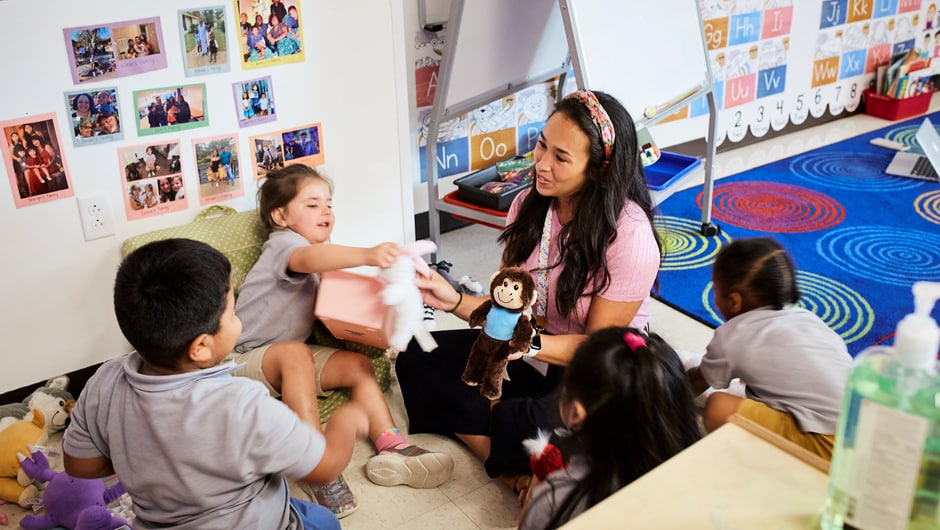Centering the Native Experience in the Classroom
Consider this: Instead of adding more lessons on Native American history, educators can opt to embed Native history, culture, and perspectives into their preexisting lessons.
If you are a Native person you’ve likely heard some or all these messages growing up—quite possibly within the last month: I thought y’all were dead. Do you live in a teepee? Where’s your headdress? You don’t look Native.
In case you are checking, yes, it’s 2020.
Within the education system in the United States, there is a tendency to tell the history of Native American and Indigenous People in a manner that is lacking and often untrue. Textbooks tell Native history that often starts with Columbus or the land bridge myth, which erases the truth that millions of Indigenous people had thriving communities with their own culture, political systems, and economic structures. In addition to this lacking history, textbooks and education standards have a tendency to portray Indigenous people as living in the past, as “drunks,” “thieves,” “lazy,” or “savages,” and as enemies to the United States becoming a country.
In North Carolina, when you pull up the state standards for K-12 social studies, there are a total of 15 Clarifying Objectives that mention “Native Americans,” “American Indians,” or “Indigenous;” only one of these includes Native history after 1900. Think about how much has happened in our country since then! It’s no wonder people think Indigenous people don’t exist.
How do you feel when you are left out or forgotten? Consider how this would affect your mental health, motivation, self-esteem, your desire to go to school, and your drive to graduate when you are erased, left out, and forgotten over and over. What about when you and your family are mocked and misrepresented, through athletic teams' mascots, in movies, and books for decades? It’s a lot to carry, and there is a lot at stake.
As a former teacher, I recognize trying to find time in your Unit Plan and relevant resources is a challenge. The work of equity and going against the way the system was designed often feels impossible. Instead of asking how can you make time for more lessons on Native American history, what would it look like for you to embed Native (read: BIPOC and LGBTQ) history, culture, and perspectives into your pre-existing lessons?
7 Considerations for Educators
As you do this, here are some essential understandings to consider:
1. If you’re not sure about what term to use, ask.
Every Native person is different and is going to have their own preference of whether to be called “Indian,” “Native American,” “Native,” “Indigenous,” etc.
In general, it’s best to refer to a specific tribe/nation if you know it. “Indigenous” refers to the collective group of people native to the North American, South American, and Australian continents. “Native American” refers to Indigenous folks that are from tribes in what’s now called the United States.
2. There's diversity in Indigenous culture.
There are currently 574 federally recognized tribes, about 65 state-recognized tribes, and many other tribes and nations that are not recognized.
While there are some similarities between tribes, think of each tribe as its own country. Each tribe has its own government, language, traditional foods, history, and culture. For example, totem poles are sacred to the tribes in the Pacific Northwest, and dreamcatchers are traditionally tied to the Anishinaabe peoples. Some tribes/nations have powwows open to the public, and some don’t have powwows at all.
Native people from a tribe on the East Coast are going to even look different Native people from the West Coast (just like someone from Norway is going to look different from someone from Italy).
3. Diversity in Indigenous peoples.
Indigenous people don’t all think, act, dress, talk, or believe the same thing. I know this might seem redundant to say. Some are more traditional, some more hipster, others more relaxed. Some can speak their language. Some have Ph.Ds. Some can dance and have regalia. Some live in reservations; most live in cities. Some have attempted the TikTok #Dreamschallenge; others hate social media.
Help students recognize and call it out when you see the stereotypical, one-dimensional narratives.
4. Indigenous Nations are older than the United States.
Native/Indigenous history didn’t start in 1492. Tribes and Nations had governments, languages, and trade routes long before any colonizers arrived. When they did arrive, the United States developed treaties with other countries and with Native American tribes. Even though Congress doesn’t honor those treaties as they should, I hope you consider them as you speak about Native tribes and nations.
5. Speak about the Trauma AND the Resistance.
Think about the stories that are often covered with Native history and the messages this sends. Often, the biggest coverage is devoted to the genocide of Native peoples, the Trail of Tears, the boarding schools (maybe). Ever heard of the Battle of Hayes Pond? Henry Berry Lowrie? The Tuscarora Wars? Do you know how hard the Haliwa Saponi are working to revive their language?
Discussing the terrible traumas and the acts of resistance (for any people groups) paints a more honest and hope-filled narrative.
6. Indigenous people exist in North Carolina.
We weren’t all removed during the Trail of Tears. North Carolina is home to about 122,000 Indigenous people, eight state/federally recognized tribes, as well as more non-recognized tribes. North Carolina has the largest tribe east of the Mississippi (Lumbee Tribe). We are very much still here!
7. Native history isn’t just folklore.
There is a tendency in texts to depict Indigenous history and stories as mythical. A quick Google image search for Native American supports this as well. I'm talking about the images with the eagle, bear, hawk, and/or wolf heads in the background, with a Native person sporting their deerskin, talking to the plants or water. You can almost hear the flute music. To folks who don’t have an understanding of those symbols, what message does that send? If your history is always displayed or talked about as a myth or folk tale, what message does that send?
What's In Your Power?
I wish I could go on and give you a download of all the Native joy, the Native resilience, the Native excellence that I am grateful to have experienced and live every day. Our Indigenous students have so much to bring to the classroom, but they can only do that when they feel seen, safe, understood.
Consider what is within your power to change for Indigenous students to be seen as strong, resilient, adaptable; not as caricatures, stereotypes, or non-existent. Whether you live and breathe the One Day vision or doubt it often like I did, I hope you lean into the hope and power you have within your classroom, school, and district. In striving towards One Day (or the vision that feels right for you), it MUST mean One Day for Indigenous students too.
Additional Resources
- 100 Ways to Support—Not Appropriate From—Native People
- Guilford County Schools Indian Ed Website
- Racial Justice Guide to Thanksgiving
Stephen Bell (Tulsa 2013) is a member of the Lumbee Tribe of North Carolina and has just started as the Indian Ed Coordinator in the Office of Equity with Guilford County Schools. He is excited to partner with Native students and families to ensure their academic, social, and emotional success and elevate the Native voices within the Guilford community.
Sign up to receive articles like this in your inbox!
Thanks for signing up!
Content is loading...








